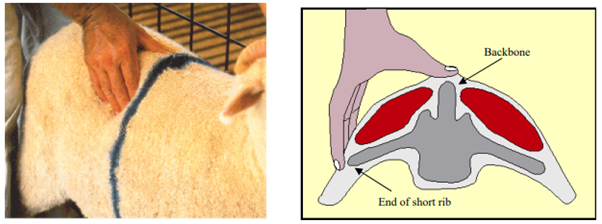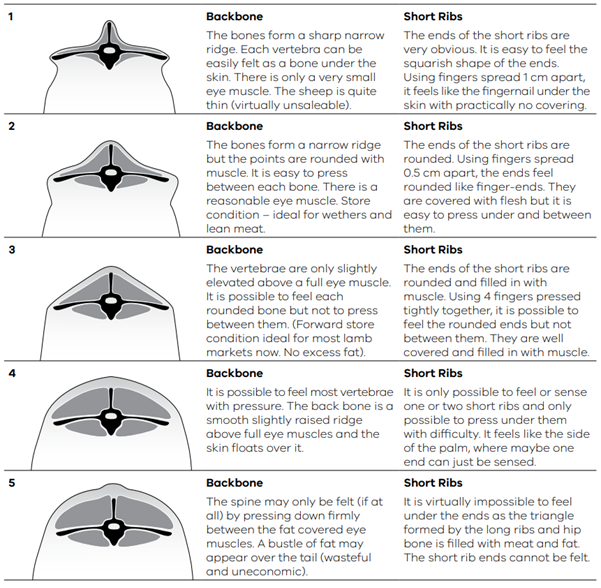Condition scoring in sheep
Lisa Brown, Veterinary Officer, Agriculture Victoria
Winter can be a stressful time for livestock. During cold weather the maintenance requirements of sheep increases as they use more energy to help them maintain their body temperature. Sheep in poor condition are especially vulnerable to extremes of weather. Therefore, it is essential to ensure they are in good condition coming into winter and can maintain until the spring feed takes off. It is far cheaper to maintain weight than it is to try and put weight back on.
Assessing the condition of sheep is useful for monitoring stock and estimating their nutritional well-being. Condition scoring is generally more useful than liveweight for assessing ewes and adult sheep not affected by different frames sizes within a flock; and corrections don’t need to be made for wool length, the weight of the foetus in pregnant ewes or fluid weight during lactation. It also doesn’t require equipment such as scales. Weighing stock is more useful for assessing young growing stock that need to put on weight that is not just condition. Assessing condition on a mob twice a month can provide a reliable indication of any weight loss or gain, and this can then be used to guide decisions such as feed budgeting.
How to assess sheep condition score
Condition score is assessed by measuring the fat and muscle coverage over the loin area. Animals are best examined in a race when standing in a relaxed position. Animals should not be tense, tightly packed against other animals or held in a crush as this makes it difficult to feel the short ribs and get an accurate condition score. Randomly draft 25-50 sheep into a race or choose a random group from the middle of the mob. Many people will undertake condition scoring by choosing a couple of sheep from each full race when doing other husbandry activities, such as drenching.
Place your thumb on the backbone just behind the last long rib and your fingers against the stubby ends of the short ribs as shown in Figure 3.

Using the scoring system described below in Figure 4 assign a score to each sheep and record the score so that an average can be calculated. Most people use a system of half scores, such as 2.5 or 3.5, for animals that fall between the scores outlined below.

The ideal score falls within a range of 2.5 to 4, with variations dependent on life stage and energy demands. Breeding ewes maintained with a body condition score between 2.5 and 3.5 will have increased conception rates and decreased lamb and ewe mortalities during lambing.
Further information and resources for condition scoring sheep are available from: Lifetime Wool - more lambs better wool healthy ewes - Condition Scoring of Sheep